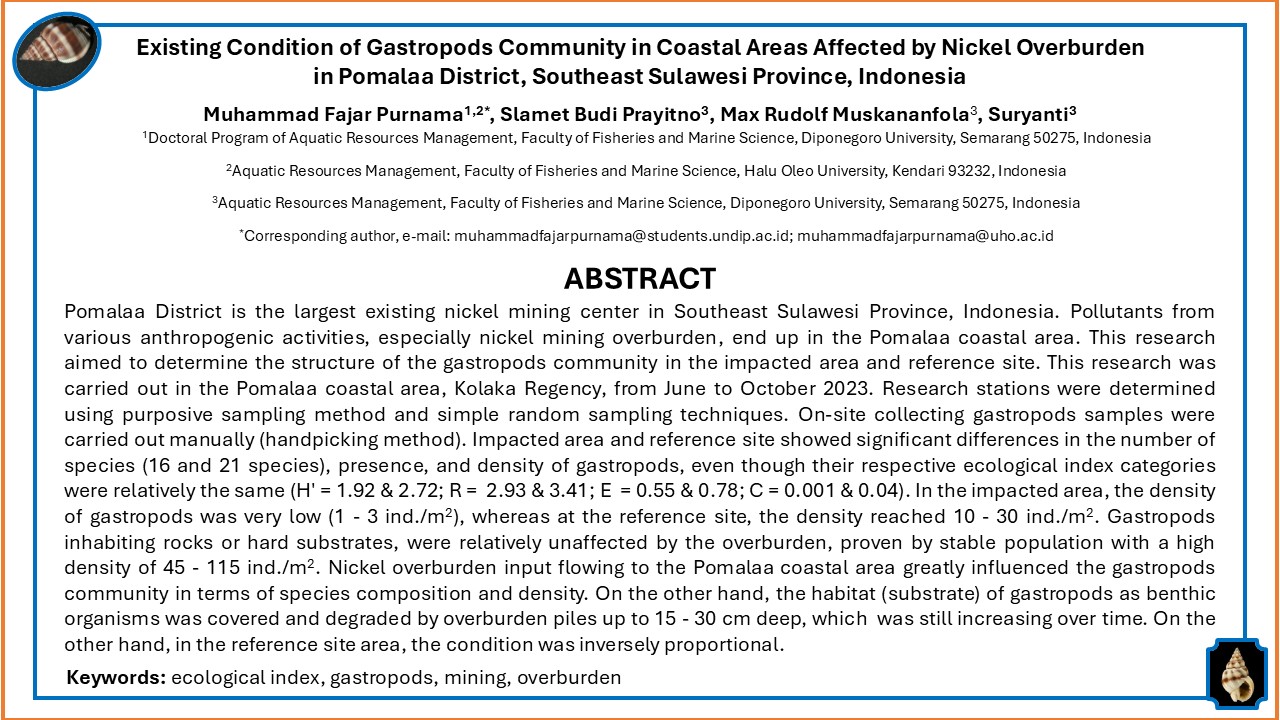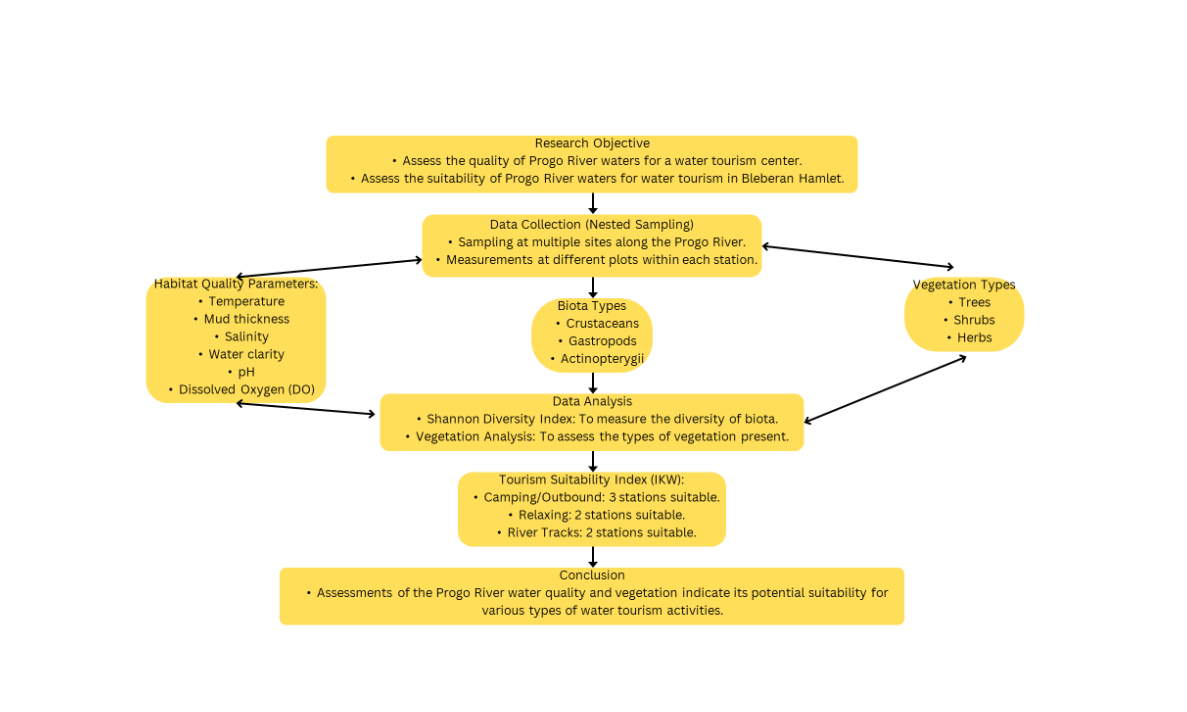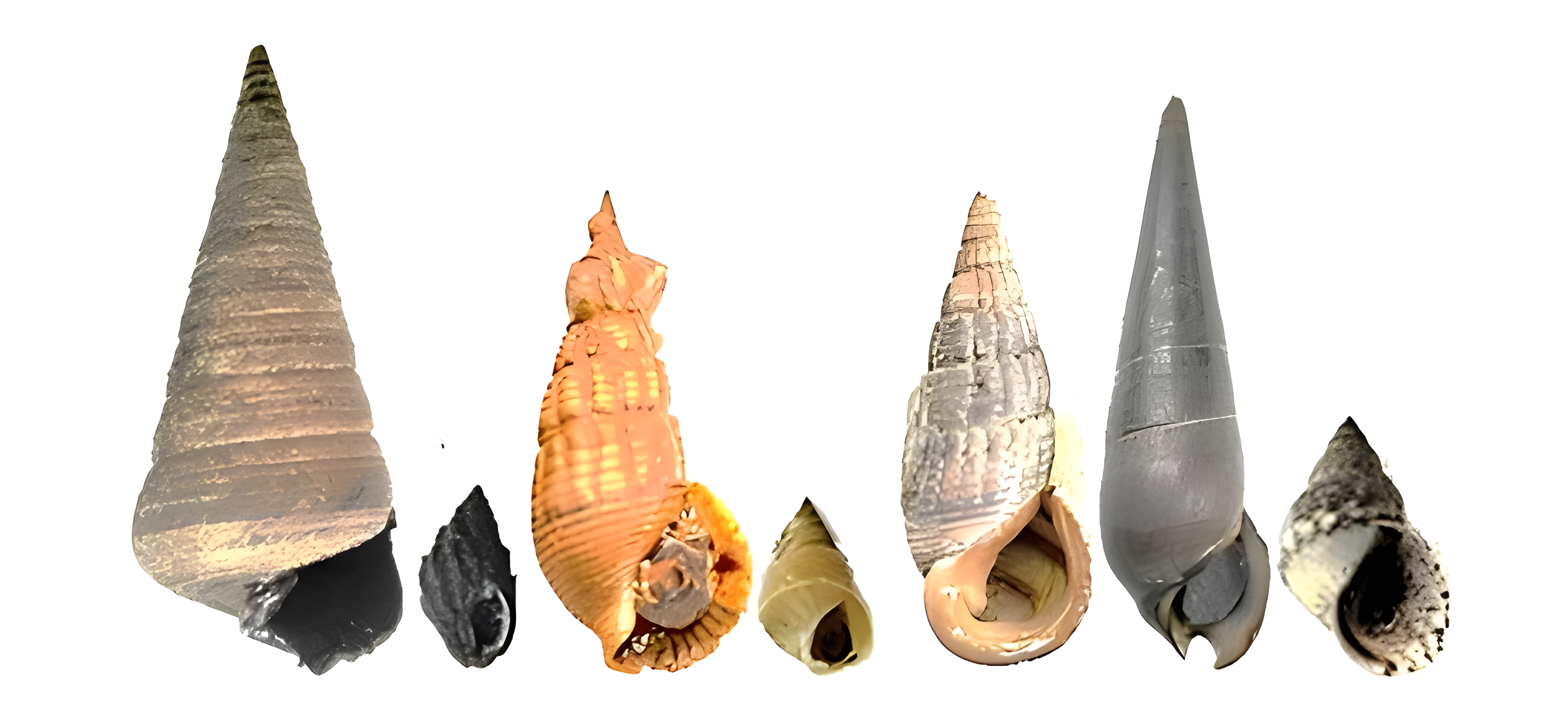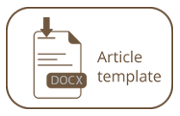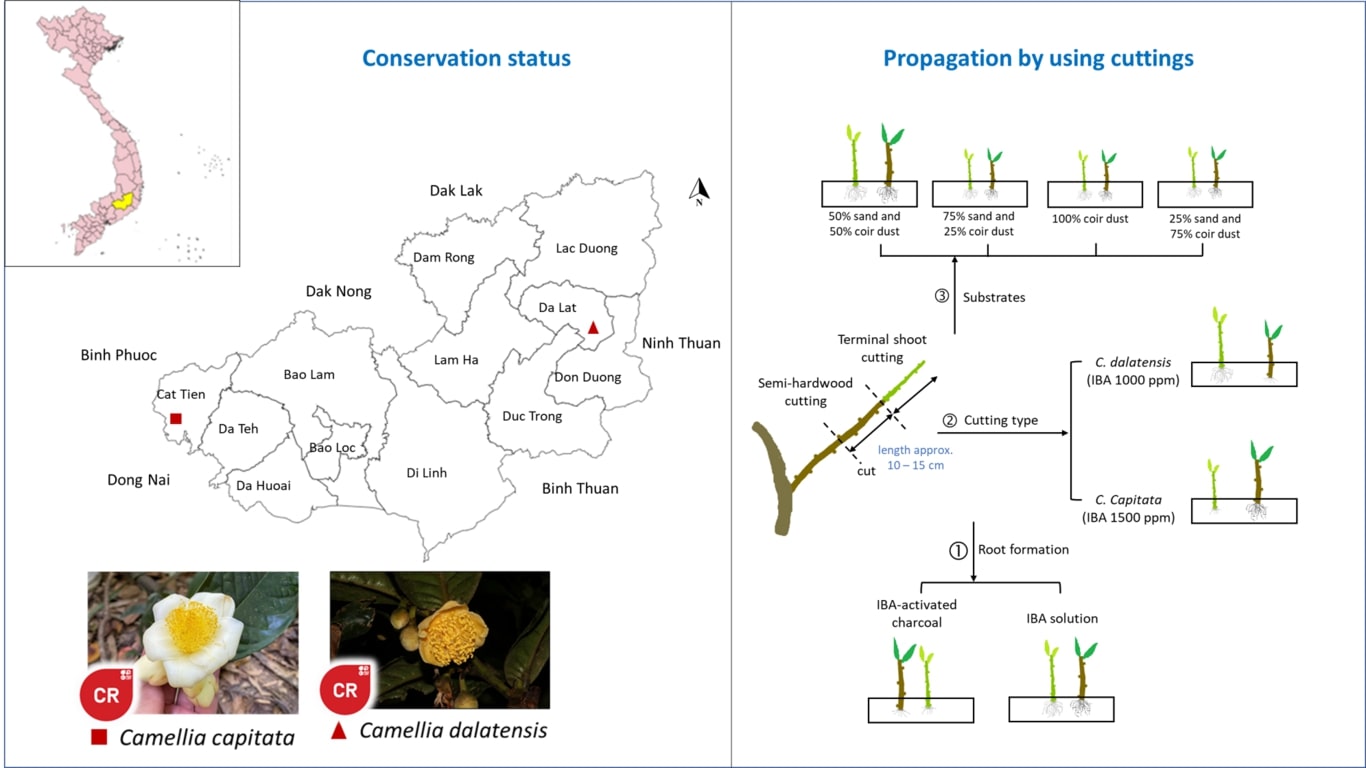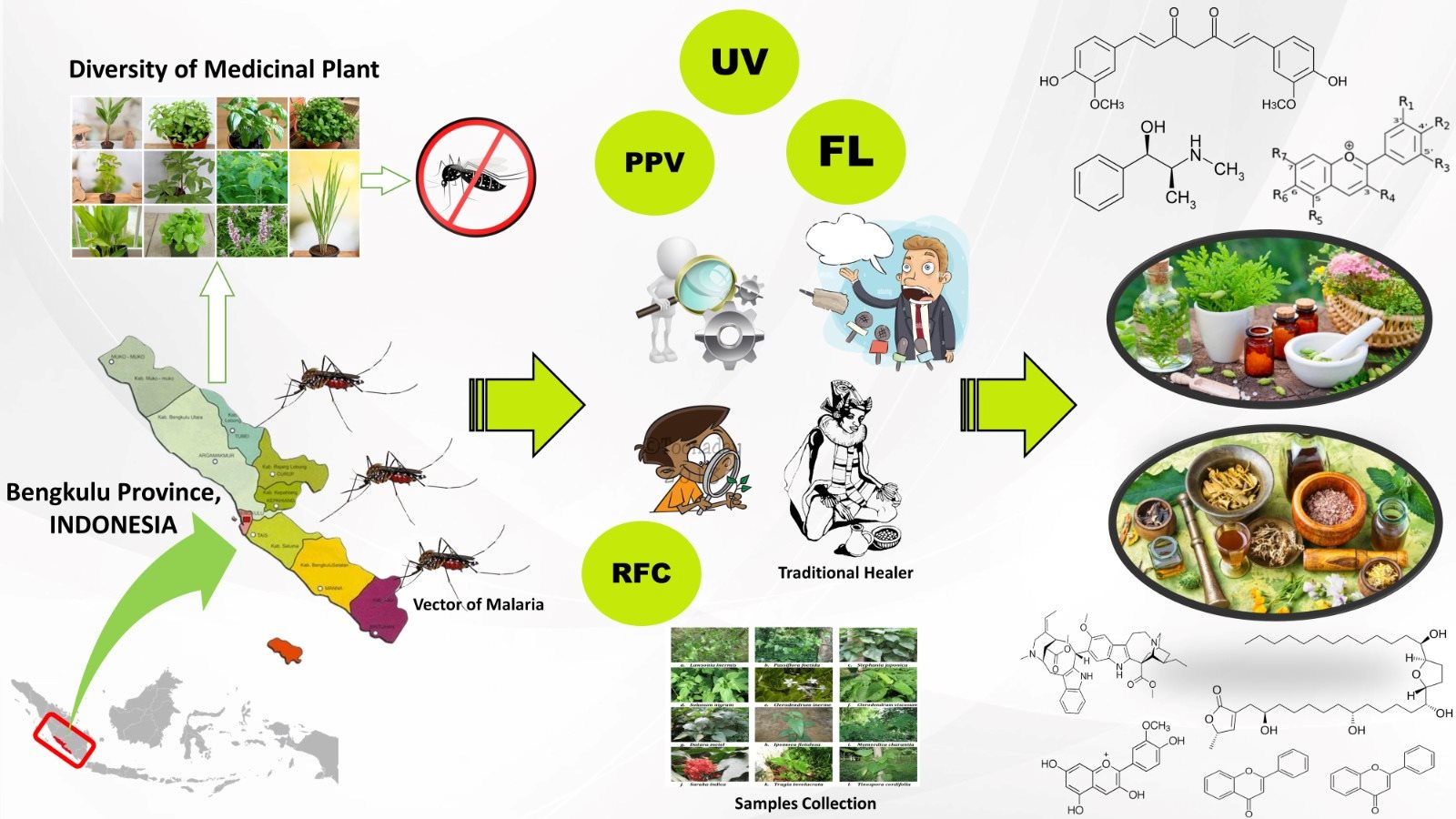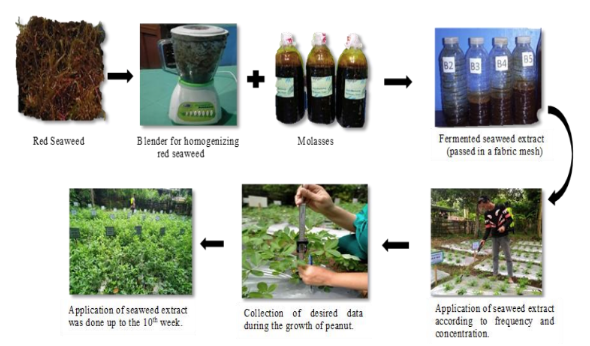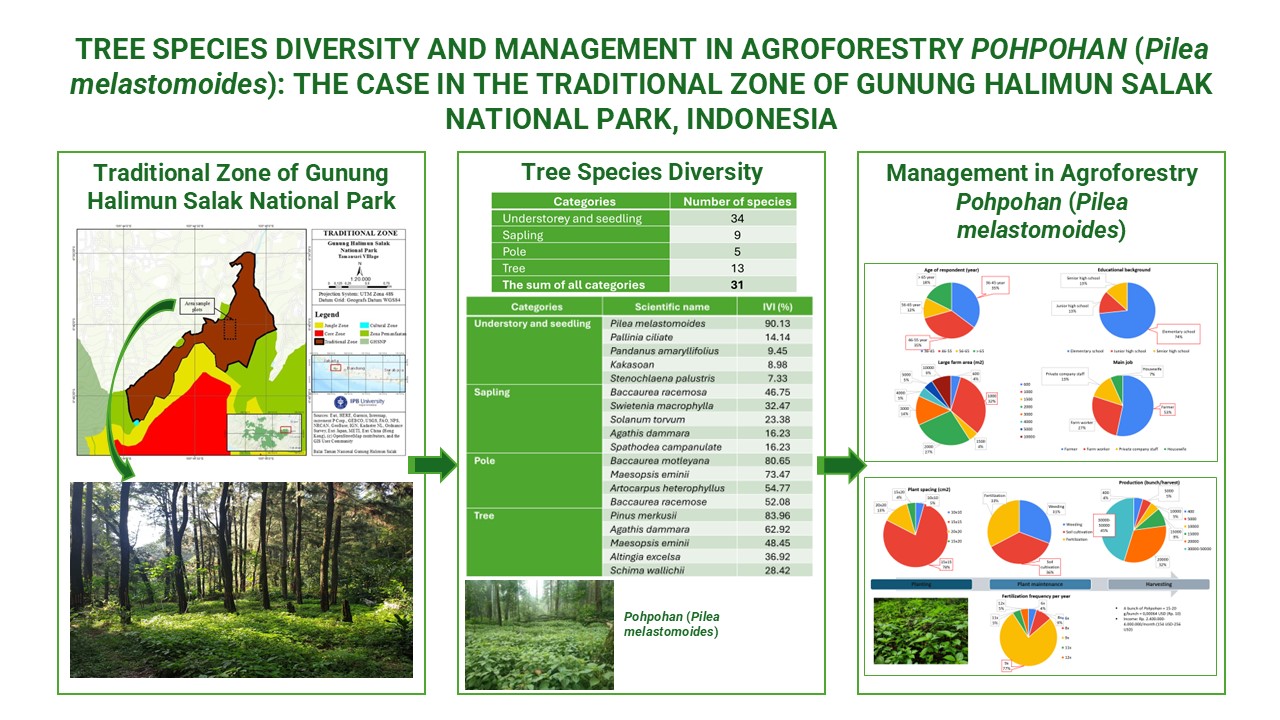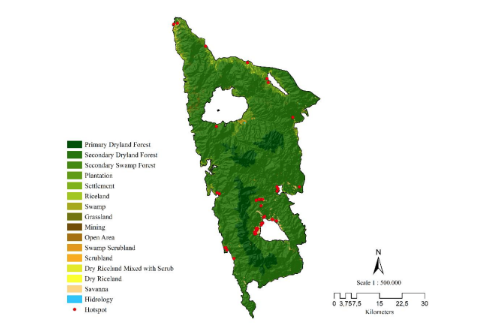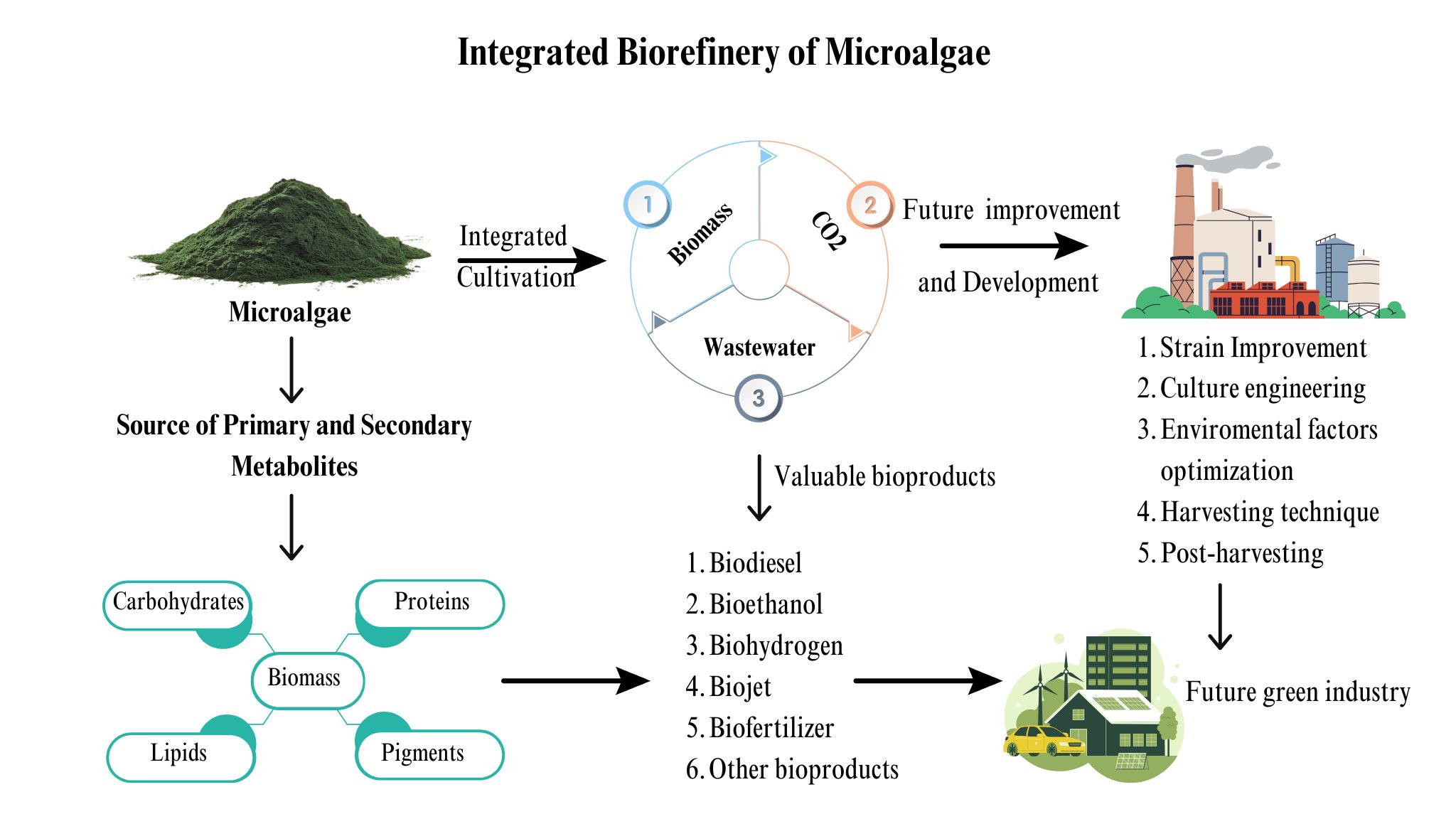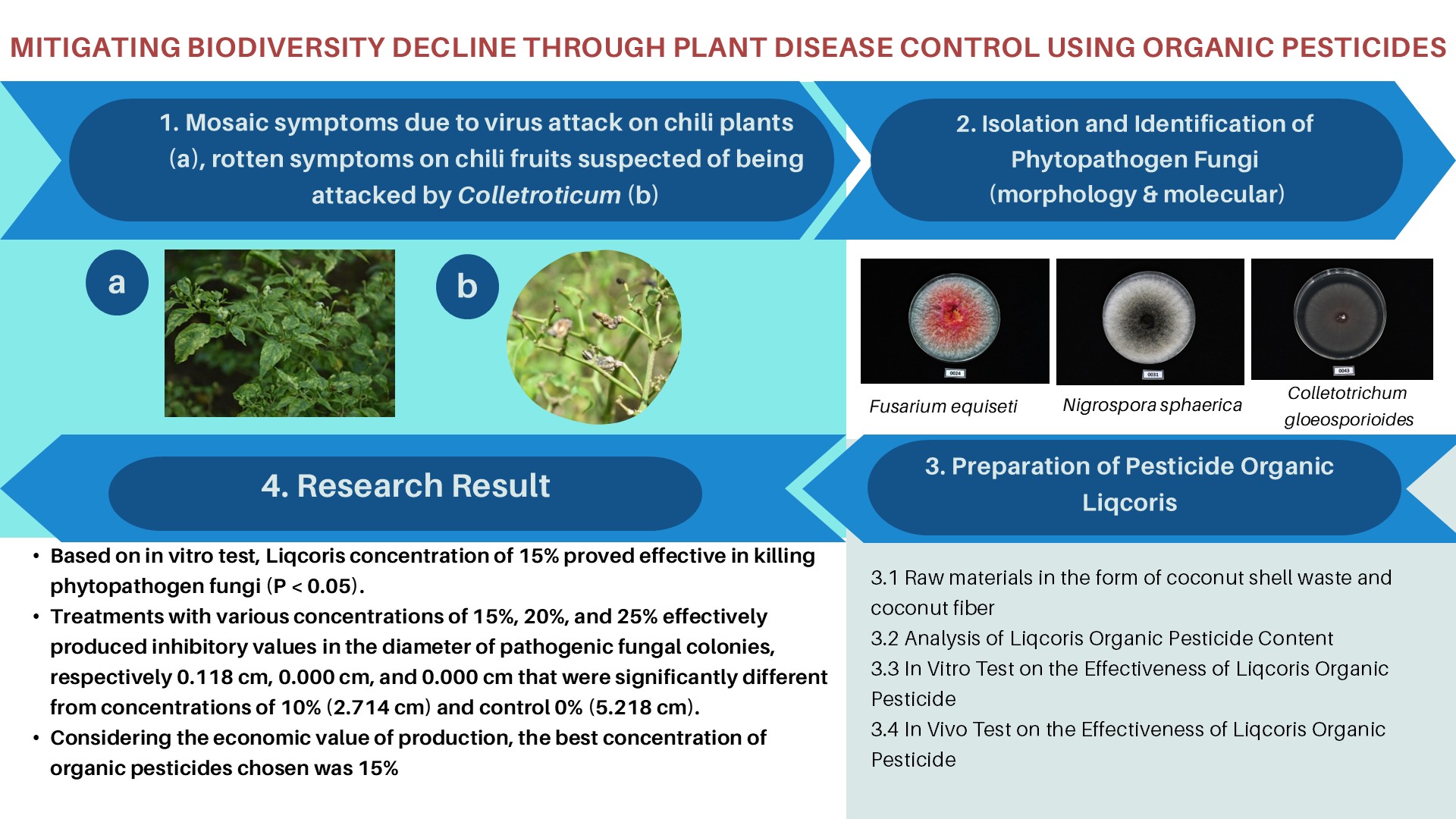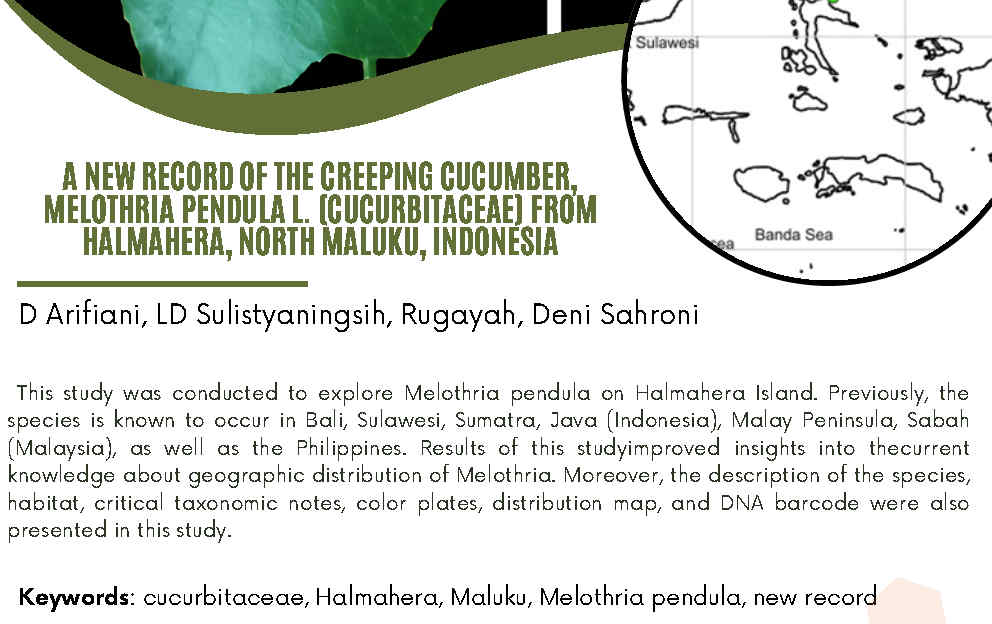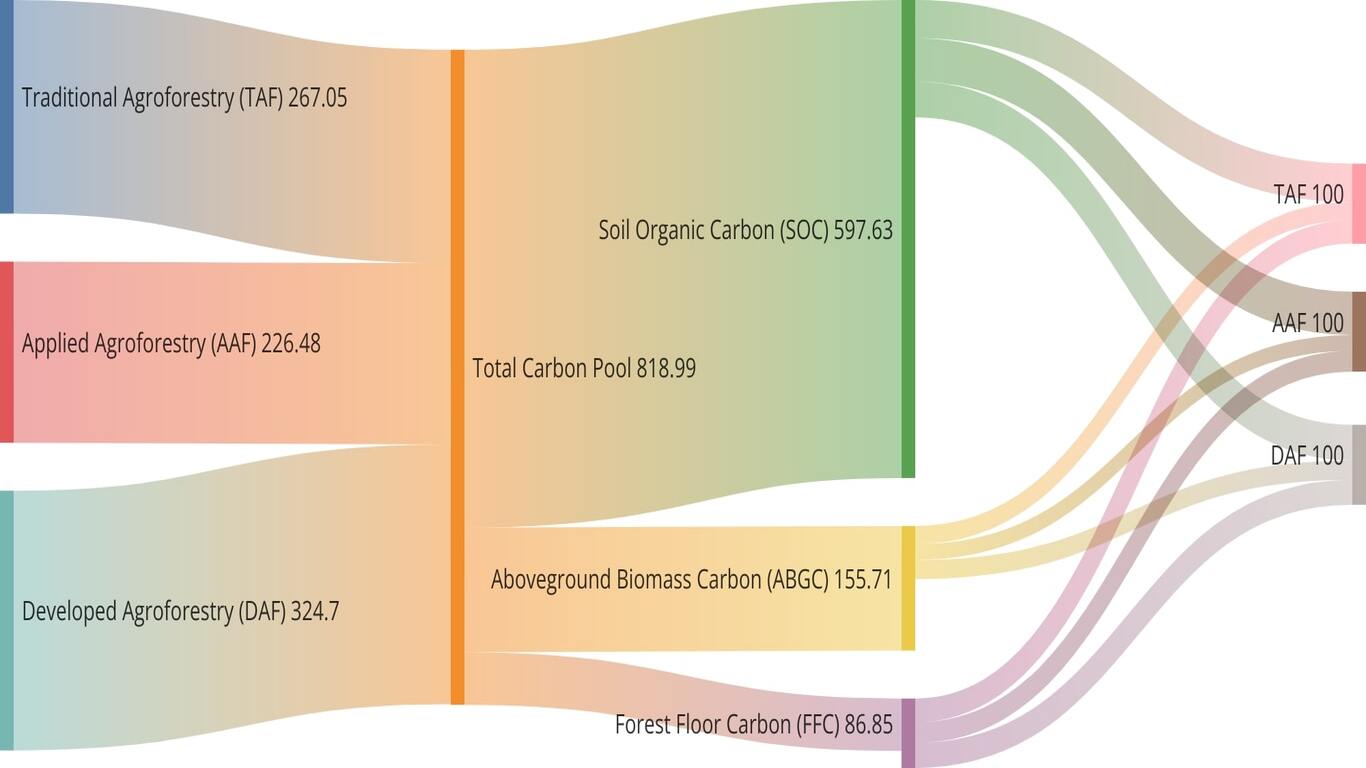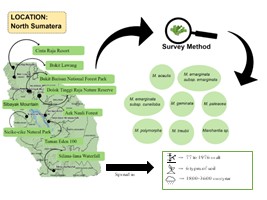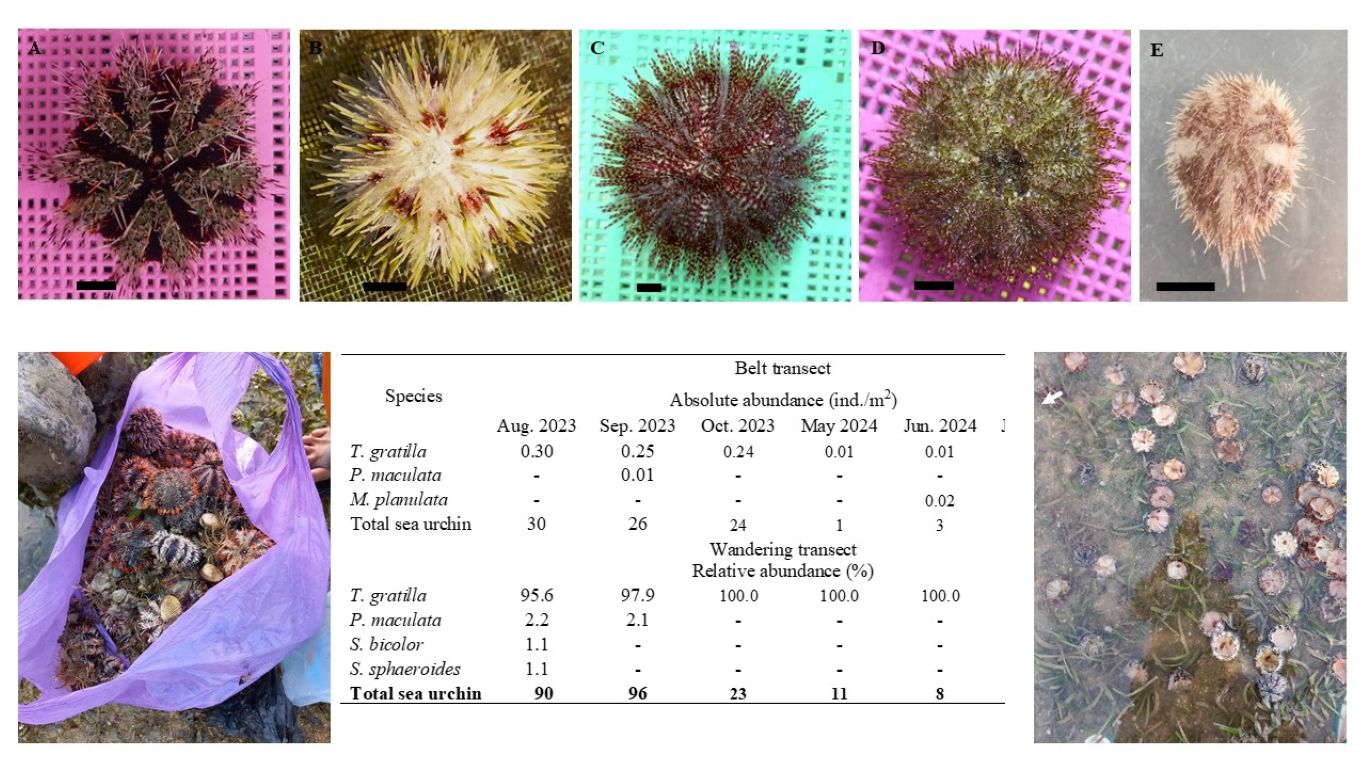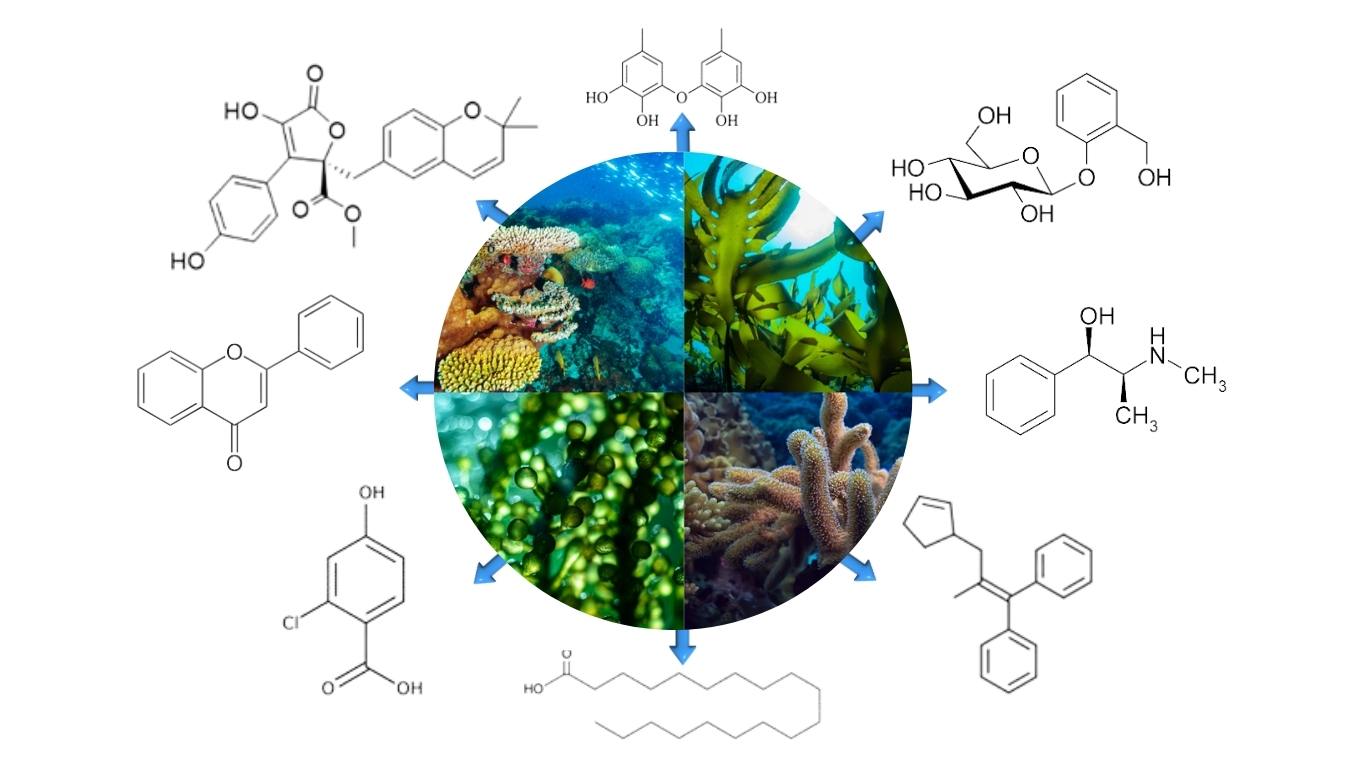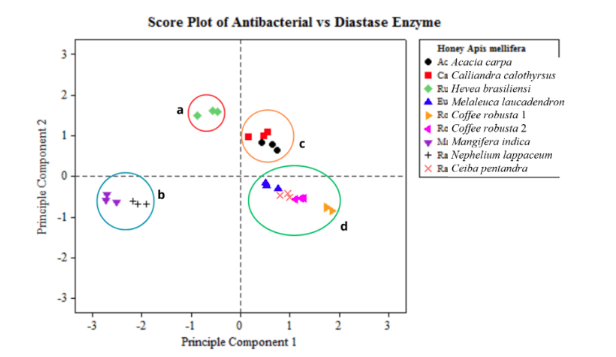ECOLOGICAL INDICES OF MANGROVE GASTROPODS COMMUNITY IN NICKEL MINING IMPACTED AREA OF POMALAA, SOUTHEAST SULAWESI
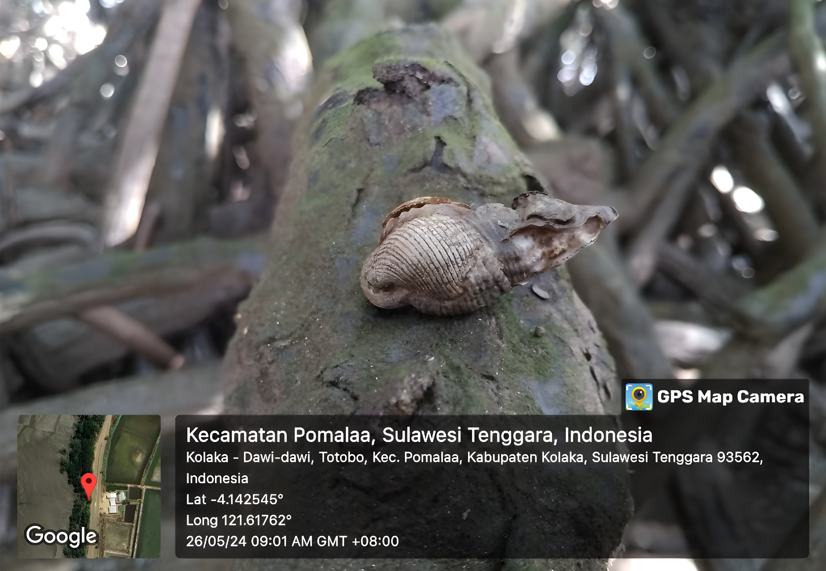
Article Highlights
- Gastropods (Invertebrates: Mollusca) have the potential to be developed as biological indicators of the health of coastal aquatic environments
- The development of gastropod communities has been proven to provide a significant ecological response in assessing environmental quality in the mangrove in relation to overburden waste input from nickel mining activities.
- Overburden waste systemically degrades the ground floor (substrate) of the mangrove ecosystem as an area where the entire life cycle of the gastropod community is carried out.
Abstract
This research aimed to determine the structure of gastropod community in the nickel mining impact area in the mangrove ecosystem of Tambea Village, Pomalaa District, Southeast Sulawesi Province. The scope of this research was gastropod community influenced by nickel mining activities, especially the impact of overburden waste input (reddish-orange colored sediment) toward the health status of the aquatic environment based on the ecological indices of the gastropod community in the mangrove ecosystem of Tambea Village. Two sampling methods were adopted in this research: (1) purposive sampling method to determine stations (locus) and (2) simple random sampling method to determine the distribution of substations or sampling points. Gastropod samples were taken using handpicking techniques. The structure of gastropod community in mangrove area affected by overburden waste showed low diversity index values (H’ = 0.81), low species richness (R = 1.75), moderate evenness (E = 0.50), and dominance of certain species (C = 0.54). The results of this research showed the massive impact of overburdened waste, which can systemically degrade the life of the typical fauna that make up the mangrove ecosystem. Three gastropods species were observed to live in the research location, namely Telescopium telescopium, Terebralia sulcata, and Terebralia palustris having low abundance (1-9 ind./m2) which can survive in environment exposed to overburden waste. Many of gastropod species were found dead, indicated by the finding of 2 shells of Ellobium aurisjudae. The input of overburdened waste may imply degradation system of the aquatic environment, especially in the mangrove ecosystem. This research offers outlooks of overburden waste on aquatic biota in mangrove ecosystems and other complimentary ecosystems. In the end, the condition of the gastropod community in a watered area becomes a basis of the health status of the water environment.
Downloads
INTRODUCTION
Coastal area is vulnerable to environmental changes, and so are the organisms living in the environment(Boruff et al., 2005)(Wahyudi, 2009)(Basir et al., 2010). The decline in environmental quality in this region is caused by anthropogenic activities which tend to be environmentally unfriendly(Singer & Battin, 2007);(Norris & Thoms, 1999);(Dziock et al., 2006). Tambea Village is one of the active open-cut nickel mining system operating in Pomalaa District, Southeast Sulawesi Province. The impact of nickel mining activities in Tambea Village is visible from changes in the environmental tone around the mangrove ecosystem and coastal areas in general. The condition of the substrate, water, and mangrove roots is orange-reddish, due to the input of overburden waste or waste rock in the form of acid mine sludge/Acid Rock Drainage (ARD) which contains low minerals(Hamzah et al., 2015);(Hamzah, 2009);(Zubayr, 2009).
Overburden waste has polluted the Tambea mangrove area for the last 2 decades and has accumulated ± 10-30 cm overburden waste covering the original (natural) substrate(Hamzah, 2009);(Zubayr, 2009). The overburden phenomenon that has been occurring for a long time, and continues to this day, can massively degrade the habitat of gastropod communities and has implications for the decline of taxa (species) and their abundance in waters as well as resulting in the loss of species that are classified as sensitive(Timm et al., 2001);(Chakrabarty & Das, 2006).
The input of overburden waste into the Tambea mangrove ecosystem does not only disturb the mangrove vegetation and other coastal plants, but also threatens the life stability of the gastropod community as part of the association(Purnama et al., 2024);(Purnama et al., 2024). Mangrove gastropods are known as benthic organisms (dominantly epifauna), spending the entire life cycle at the bottom of the waters or occupying the substrate as their life niche. The bottom water substrate in the mangrove ecosystem is the habitat of the gastropod community(Chukaeva & Petrov, 2023);(Menon et al., 2023);(Laraswati et al., 2020);(Wahyudi et al., 2015);(Campbell et al., 2008). Therefore, any disturbances arising from various anthropogenic activities, especially exposure to overburden waste,
can cause loss of habitat and ecological niche of gastropod communities(Purnama et al., 2024). In the end, the phenomenon of overburden waste exposure can eliminate the existence of the gastropod community as one of the keystone species in its ecological environment(Purnama et al., 2024).
Accordingly, empirical research regarding the ecological indices of gastropods in areas with exposure to overburden waste in the mangrove ecosystem of Tambea Village is very important to carry out, considering that research related to this has never been carried out in Southeast Sulawesi in particular and Indonesia in general. Apart from that, this research has important value as a source of renewable novel scientific information about gastropod communities that can survive in areas exposed to overburden waste from nickel mining activity. This research aimed to determine the ecological indices of gastropod communities in mangrove areas exposed to overburden waste in Tambea Village, Pomalaa District, Southeast Sulawesi Province.
MATERIALS AND METHODS
Materials and Tools
Materials used in this research were distilled water and 70% alcohol (to preserve the samples). Meanwhile, tools used in this research were quadrat transects, gloves, hand scoops, plastic bags to store samples, sample baskets, label paper, and an instrument for taking samples in the field.
Research Sites
The research was carried out in mangrove ecosystem in Tambea Village, Pomalaa District, Kolaka Regency, Southeast Sulawesi Province. The research location is directly connected to the upstream flow, where the existing nickel mining area is located, which carries overburden waste. The research location (-4.219927, 121.584465) was transformed into station dimensions, totaling 5 sample areas spread across the Tambea Village mangrove ecosystem. These 5 stations were representatives of the entire extent of the mangrove ecosystem at the research location. An overview of the research location is presented inFigure 1.
Figure 1.Research location in the Tambea mangrove ecosystem which is exposed to overburden waste from nickel mining activities
Description of the Problem or Reason for the Research
Gastropods live in their natural environment as fungivores, carnivores, omnivores scavengers, and detritivores based on their food habits and have a role as prey or food for several fish species (mangrove jack), birds (poultry), and crustaceans in the mangrove ecosystem(Lalita, 2016)(Alongi, 2009)(Cappenberg et al., 2006). All biological activities related to food habits and ecological roles take place on the ground floor or substrate of the mangrove ecosystem (benthos-epifauna)(Chukaeva & Petrov, 2023);(Menon et al., 2023). Continuous exposure to overburden waste can permanently damage the residential habitat of most gastropod communities(Purnama et al., 2024). Moreover, the input of overburden waste has been ongoing for approximately 2 decades. In other words, the loss of natural substrate which is covered by overburden sediment waste, directly affects the life system of gastropod community, considering that the activities that support the gastropod’s survival are carried out at the bottom of the waters(Purnama et al., 2024);(Purnama et al., 2024). Therefore, this research needs to be carried out as updated empirical information regarding taxa and ecological indices of gastropod communities that live in mangrove areas with overburden waste exposure. Gastropods exposed to overburden waste has
Alongi DM. 2009. The energetics of mangrove forest (1st ed.). Dordrecht (NL): Springer. DOI: 10.1007/978-1-4020-4271-3 DOI: https://doi.org/10.1007/978-1-4020-4271-3
Arbi UY, Kawaroe M, Marwoto RM, Ulumuddin YI. 2022. Morphological and ecological characteristics of Potamididae Snails (Gastropoda) from the mangrove habitat of the Pari Island Group, Jakarta. National Maritime Journal 17(2):93-106. DOI: https://doi.org/10.15578/jkn.v17i2.8218
Boruff BJ, Emrich C, Cutter SL. 2005. Erosion hazard vulnerability of US Coastal Countries. J Coast Res 21(5):932-42. DOI: 10.2112/04-0172.1 DOI: https://doi.org/10.2112/04-0172.1
Budiman A. 1991. Review of several ecological patterns of Indonesian mangrove mollusks. Dissertation. Depok (ID): University of Indonesia. 380 p.
Budiman A. 1988. Some aspects on the ecology of mangrove whelk Telescopium Telescopium (Linné, 1758) (Mollusca, Gastropoda: Potamididae). Treubia 29(4):237-45.
Budi DA, Suryono CA, Ario R. 2013. Study of gastropod abundance in the eastern part of Semarang waters for the period March-April 2012. J Mar Res 2(4):56-65. DOI: 10.14710/jmr.v2i4.3684
Basir N, Taufik M, Sukojo BM. 2010. Model of coastal vulnerability to sea level rise using remote sensing technology, case study: Bengkalis Island. National Postgraduate Seminar X. Sepuluh November Institute of Technology, Surabaya, 4 August 2010.
Cappenberg HAW, Aziz A, Aswandy I. 2006. Mollusk communities in the waters of Gilimanuk Bay, West Bali. Oceanology and Limnology in Indonesia 40:53-64.
Campbell JB, Reece LG, Mitchel. 2008. Biology. Fifth edition. Volume 3. Jakarta (ID): Penerbit Erlangga.
Chukaeva M, Petrov D. 2023. Assessment and analysis of metal bioaccumulation in freshwater gastropods of urban river habitats, Saint Petersburg (Russia). Environ Sci Pollut Res 30(3):7162-72. DOI: 10.1007/s11356-022-21955-8 DOI: https://doi.org/10.1007/s11356-022-21955-8
Chakrabarty D, Das SK. 2006. Alteration of macroinvertebrate community in tropical lentic systems in context of sediment redox potential and organic pollution. Biol Rhythm Res 37(3):213-22. DOI: 10.1080/09291010600689101 DOI: https://doi.org/10.1080/09291010600689101
Dziock F, Henle K, Foeckler F, Follner K, Scholz M. 2006. Biological indicator systems in foodplains: A review. Int Rev Hydrobiol 91(4):271-91. DOI: 10.1002/iroh.200510885 DOI: https://doi.org/10.1002/iroh.200510885
Dharma B. 1988. Siput dan kerang Indonesia (Indonesia shells I). [Indonesian snails and shellfish]. Jakarta (ID): PT Sarana Graha.
Egonmwan RI. 2008. The ecology and habitat of Tympanotonus fuscatus var. radula L.(Cerithiacea: Potamididae). J Biol Sci 8(1):186-90. DOI: https://doi.org/10.3923/jbs.2008.186.190
Ernanto R, Agustriani F, Aryawaty R. 2010. Gastropod community structure in the mangrove ecosystem at the mouth of the Batang Ogan Komering Ilir River, South Sumatra. Maspari Journal: Marine Sci Res 1(1):73-8.
Fratini S, Vannini M, Cannini S. 2008. Feeding preference and food searching strategies mediated by air- and water-borne cues in the mud whelk Terebralia palustris (Potamididae: Gastropoda). J Exp Mar Biol Ecol 362:26-31. DOI: https://doi.org/10.1016/j.jembe.2008.05.008
Fitriana YR. 2006. Diversity and abundance of macrozoobenthos in mangrove rehabilitation forest in Great Garden Forest Ngurah Rai Bali. Biodiversitas 7(1):67-72. DOI: https://doi.org/10.13057/biodiv/d070117
Hamzah HE, Riani E, Saharuddin NSI. 2015. Pollution load, assimilative capacity and quality status of coastal waters in Pomalaa nickel mining site of Southeast Sulawesi. Int J Res 3(03):2311-484.
Hamzah. 2009. Water quality study at the Pomalaa nickel mining site, Southeast Sulawesi. [Thesis]. Bogor (ID): Bogor Agricultural University. 270p.
Hutama HFR, Hartati R, Djunaedi A. 2019. Macrozoobenthos gastropods in mangrove vegetation on the North Coast, Semarang. Marina Oceanographic Bulletin 8(1): 37-43. DOI: https://doi.org/10.14710/buloma.v8i1.22453
Haryoardyantoro S, Hartati R, Widianingsih W. 2013. Composition and abundance of gastropods in mangrove vegetation in Tugurejo Village, Tugu District, Semarang City. J Mar Res 2(2):85-93.
Irma D, Sofyatuddin K. 2012. Diversity of gastropods and bivalves in mangrove ecosystem rehabilitation areas in Aceh Besar and Banda Aceh Districts, Indonesia. Aquacult Aquarium Conserv Legis 5(2):55-9.
Jamabo NA, Davids CBD. 2012. The food and feeding habit of Tympanotonus fuscatus var. fuscatus (Linnaeus, 1758) in the mangrove swamps of the Bonny River, Niger Delta, Nigeria. Res J Agric Sci 3(5):1120-2.
Kamimura S, Tsuchiya M. 2004. The effect of feeding behavior of the gastropods Batillaria zonalis and Cerithideopsilla cingulata on their ambient environment. J Mar Biol 144:705-12. DOI: https://doi.org/10.1007/s00227-003-1238-x
Lorda J, Lafferty KD. 2012. Shading decreases the abundance of the herbivorous California horn snail, Cerithidea californica. J Exp Mar Biol Ecol 432-433:148-55. DOI: https://doi.org/10.1016/j.jembe.2012.07.009
Laraswati Y, Soenardjo N, Setyati WA. 2020. Composition and abundance of gastropods in the mangrove ecosystem in Tireman Village, Rembang Regency, Central Java. J Mar Res 9(1):41-8. DOI: 10.14710/jmr.v9i1.26104 DOI: https://doi.org/10.14710/jmr.v9i1.26104
Lalita JD. 2016. Sexual selection, unique ovovivivar reproductive strategies and ecological significance of Littoraria scabra (Gastopoda: Littorinidae) in the Tombariri Mangrove Forest Ecosystem, North Sulawesi. Dissertation. Malang (ID): Brawijaya University.
Ludwig JA, Reynolds JF. 1988. Statistical ecology: A primer in methods and computing. Volume 1. New York (US): John Wiley & Sons.
Maturbongs MR, Elviana S. 2016. Composition, density and diversity of gastropod species in the Kambapi coastal mangrove area during the transition season I. Agrikan. Journal of Agribusiness Fisheries 9(2):19-23. DOI: https://doi.org/10.29239/j.agrikan.9.2.19-23
Menon M, Mohanraj R, Joemon VB, Rv AP. 2023. Bioaccumulation of heavy metals in a gastropod species at the Kole wetland agroecosystem, a Ramsar site. J Environ Manage 329:117027. DOI: 10.1016/j.jenvman.2022.117027 DOI: https://doi.org/10.1016/j.jenvman.2022.117027
Mustofa VM, Soenardjo N, Pratikto I. 2023. Sediment texture analysis of gastropod abundance in the mangrove ecosystem of Pasar Banggi Village, Rembang. J Mar Res 12(1):137-43. DOI: https://doi.org/10.14710/jmr.v12i1.35003
Nybakken JW, Bertness MD. 2005. Marine biology: An ecological approach. San Francisco (US): Pearson/Benjamin Cummings.
Nontji A. 2007. Laut Nusantara [Archipelago Sea]. Jakarta (ID): Penerbit Djambatan.
Norris RH, Thoms MC. 1999. What is river health? Freshwater Biol 41:197-209. DOI: 10.1046/j.1365-2427.1999.00425.x DOI: https://doi.org/10.1046/j.1365-2427.1999.00425.x
Odum EP. 1993. Dasar-Dasar Ekologi [Basics of Ecology]. Jakarta (ID): Gramedia. 697 p.
Penha-Lopes G, Bartolini F, Limbu S, Cannici S, Mgaya Y, Kristensen E, Paula J. 2010. Ecosystem engineering potential of the gastropod Terebralia palustris (Linnaeus, 1767) in mangrove wastewater wetlands: A controlled mesocosm experiment. Environ Pollut 158(1):258-66. DOI: 10.1016/j.envpol.2009.07.009 DOI: https://doi.org/10.1016/j.envpol.2009.07.009
Prabaningrum A, Hanafi Y, Ma'rifah DR. 2021. Literature study of gastropod diversity levels as a biology learning resource for class X high school on biodiversity material. Bioscientist: J Biol Sci 9(2):318-25. DOI: https://doi.org/10.33394/bioscientist.v9i2.3800
Purnama MF, Prayitno SB, Muskananfola MR, Suryanti S. 2024a. Tropical gastropod density and diversity in the mangrove forest of Totobo Village, Southeast Sulawesi, Indonesia. Biodiversitas 25(4):1663-75. DOI: 10.13057/biodiv/d250436 DOI: https://doi.org/10.13057/biodiv/d250436
Purnama MF, Prayitno SB, Muskananfola MR, Suryanti S. 2024b. Red berry snail Sphaerassiminea miniata (Gastropoda: Mollusca) and its potential as a bioindicator of environmental health in mangrove ecosystem of Pomalaa, Kolaka District, Indonesia. Biodiversitas 24(6):2330-9. DOI: 10.13057/biodiv/d250601 DOI: https://doi.org/10.13057/biodiv/d250601
Rau AR, Kusen JD, Paruntu CP. 2013. Mollusk community structure in mangrove vegetation in Kulu Village, Wori District, North Minahasa Regency. Trop Coastal Mar J 2(1):44-50. DOI: https://doi.org/10.35800/jplt.1.2.2013.2123
Silaen IF, Hendrarto B, Nitisupardjo M. 2013. Distribution and abundance of gastropods in the mangrove forest of Teluk Awur Jepara. Management of Aquatic Resources Journal (MAQUARES) 2(3):93-103. DOI: https://doi.org/10.14710/marj.v2i3.4187
Singh S, Sandhu RK, Aravind NA. 2020. Record of pestiferous land snail, Macrochlamys indica Godwin-Austen 1883 (Gastropoda: Ariophantidae), on citrus and guava plants in Punjab, India. Records of the Zoological Survey of India 120 (3):293-6. DOI: https://doi.org/10.26515/rzsi/v120/i3/2020/152232
Singer GA, Battin TJ. 2007. Anthropogenic subsidies alter stream consumer resource stoichiometry, Biodiversity, and Food Chains. Ecological Applications 17(2):376-389. DOI: 10.1890/06-0229 DOI: https://doi.org/10.1890/06-0229
Timm H, Ivask M, Möls T. 2001. Response of macroinvertebrates and water quality to long-term decrease in organic pollution in some Estonian streams during 1990–1998. Hydrobiologia 464:153-64. DOI: 10.1023/A:1013999403209 DOI: https://doi.org/10.1023/A:1013999403209
Vannini M, Lori E, Coffa C, Fratini S. 2008. Cerithidea decollata: A snail that can foresee the future? Animal Behaviour 76(3):983-92. DOI:10.1016/j.anbehav.2008.05.016 DOI: https://doi.org/10.1016/j.anbehav.2008.05.016
Wahyudi RA, Purnomo T, Ambarwati R. 2015. Lead (Pb) levels and population density of Cerithidea sp. on the South Coast of Bangkalan Madura Regency, East Java. LentaraBio 4(3):174-9.
Wahyudi. 2009. SENTA: Analysis of coastal vulnerability in the North Coast Coastal Area of East Java. Surabaya (ID): Institut Teknologi Sepuluh November.
Wilhm JL. 1975. Biological indicators of pollution. In Whitton BA (Editor). River ecology. Oxford (UK): Blackwell Scientific Publication. p.375-402.
Wells FE. 2003. Ecological separation of the mudwhelks Terebralia sulcata (Born, 1778) and T. semistriata (Mörch, 1852) (Gastropoda: Potamididae) from northern Australia. The Nautilus 117(1):1-5.
Wells FE, Lalli CM. 2003. Aspects of the ecology of the mudwhelks Terebralia palustris and T. semistriata in northwestern Australia. In: Wells FE, Walker DI, and Jones DS (Editors.) 2003. The marine flora and fauna of Dampier, Western Australia. Perth (AU): Western Australian Museum. p.193-208.
Wirakusumah S. 2003. Basics of ecology supporting knowledge of environmental sciences. Jakarta (ID): UI Press.
Yasman. 1998. Community structure of Gastropods (Molluscs) in mangrove forests on the West Coast of Handeulum Island, Ujung Kulon National Park and the North Coast of West Penjaliran Island, Jakarta Bay: A Comparative Study. Proceedings of Seminar VI Mangrove Ecosystem, MAB Program. 15-18 September 1998. Jakarta (ID): LIPI (Indonesian Institute of Sciences). 326 p.
Zubayr SA. 2009. Analysis of the status of heavy metal pollution in coastal areas (Case study of disposal of liquid waste and solid tailings/Pomalaa Nickel Mining Slag). [Thesis]. Bogor (ID): Bogor Agricultural University. 127p.
Copyright (c) 2024 Muhammad Purnama

This work is licensed under a Creative Commons Attribution-NonCommercial-NoDerivatives 4.0 International License.
Authors who publish with this journal agree with the following terms:
- Authors retain copyright and grant the journal right of first publication, with the work 1 year after publication simultaneously licensed under a Creative Commons attribution-noncommerical-noderivates 4.0 International License that allows others to share, copy and redistribute the work in any medium or format, but only where the use is for non-commercial purposes and an acknowledgement of the work's authorship and initial publication in this journal is mentioned.
- Authors are able to enter into separate, additional contractual arrangements for the non-exclusive distribution of the journal's published version of the work (e.g., post it to an institutional repository or publish it in a book), with an acknowledgement of its initial publication in this journal.
- Authors are permitted and encouraged to post their work online (e.g., in institutional repositories or on their website) prior to and during the submission process, as it can lead to productive exchanges, as well as earlier and greater citation of published work (See The Effect of Open Access).

